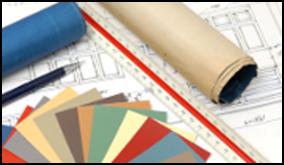Copyright © 2026 American Organization of Building Companies All Rights Reserved
Designing Your Project
Creative & innovative design solutions turn your project into reality
Planning & Budgeting
Proper project planning and budgeting saves time and money
Tips & Tools
Tips & Tools that will help you throughout your project
How much does it cost: Bathroom?
Cost drivers
These are based upon renovations within greater metropolitan areas. Your costs may vary based upon your location. Specifically expect costs in the New York area and in major cities in California to equal or exceed these costs; in the rest of the U.S. costs may be lower. This is due in large part to different costs of living in various areas which affect labor costs, and different real estate prices which affect materials costs. In areas of labor shortages costs will also rise, sometimes dramatically, and construction times may increase as well, or alternately construction times may decrease, depending in large part upon the relationships your construction management firm has.
In renovating a bathroom, some factors which regulate costs include the size of the room, how much system or structural work can be preserved (pipes, etc.), what kind of bathing/showering structure is there and whether it will be changed, whether an addition is involved, whether you are taking out any walls, and the level of luxury you are going for.
In addition, this article is primarily concerned with residential bathrooms in owner-occupied homes, rather than in properties being developed exclusively for sale. Clearly when profit is the major concern design and budgeting are planned differently, resulting in lower costs in most developments (houses and condos at the extreme high end will still have budgets in the middle to high range of those listed here).
Reducing Costs
Some things you can do to reduce or keep costs down, which of course may not be possible or desirable for you, include the following:
• Avoid removing walls or adding to the size of the room.
• Avoid additions, especially that involve foundations (consider going up rather than out if adding a
new bathroom).
• Avoid taking out the tub, but concentrate on changing the tile and faucetry and if needed, recoating
the tub to change its color or make it like new again.
• Avoid changing from a bathtub to a walk-in shower or vice versa.
• Avoid changing the location of plumbing fixtures and drains, particularly the toilet.
• Avoid changing the location of the vent fan, or changing the size or location of windows.
• Avoid the use of custom or handmade components.
• Look for stock items at major retailers rather than special order items at small specialty retailers.
• Keep the porcelains white, and the metals chrome or brushed nickel.
• Use larger tiles in simple patterns to reduce tile labor costs.
• Work with your designer or plumbing contractor to locate fixtures (in a new bath or when changing
fixture locations) to reduce plumbing labor costs by making piping more efficient.
• Avoid unneeded multiple electrical components to reduce electrical labor costs.
• Avoid change orders; make almost all decisions before beginning construction.
So what's it cost?
The cost of the average bathroom will range from $6,000 to $40,000. Many small bathrooms will run between $15,000 and $25,000; medium sized rooms tend towards $25,000 to $40,000; some larger bathrooms will extend to $60,000 and up. Many half baths/power rooms will run from $3,000 to $16,000. Such a wide price range reflects the extreme variety of products on the market today, from a very low end to a luxuriously high end. It also reflects the extreme variations of work to be done, from replacing a few items in place, to knocking out walls and sections of walls, enlarging a room, changing locations of and types of fixtures or adding new fixtures, etc.
When to spend more
Other than pure aesthetics, there are many reasons to avoid spending at the bottom of the market when renovating, particularly within a bathroom project. You will need to decide what works for your family, your lifestyle, and your resale plans.
Resale Issues
According to Remodeling Magazine (as reported in Realty Times), the return on investment for a bathroom remodel at resale ranges from 60% to 151%, depending upon your location. Luxury bathroom remodels, which include such features as adding to the bathroom's footprint, doubling windows, adding double sinks, separating bathing and showering features, and adding partitioned toilet areas, tended to generate higher return on investment-ROIs in some markets than standard renovations.
How this plays out in your home can depend upon home sale factors in your region, city, and even neighborhood; upon how old and in what condition the existing bathroom is found; and what competing homes on the market are doing (market standards).
If this is a concern for you, you may want to discuss these issues with a good Realtor who is familiar with your region and your surrounding area (even neighborhood). Another consideration aside from strictly resale price is time on market. If your home has bathrooms below or significantly below market standards, particularly in a market with fairly high numbers of homes available, that may mean a longer time on the market when you are ready to, or need to, sell.
This situation can be stressful and can lead to additional expense in mortgage carry costs, alternative living situation costs, etc; these possible costs ought to be factored into your ROI calculations in some way.
Author Robert Irwin, in his book Improve the Value of Your Home up to $100,000, recommends that a bathroom be valued at approximately 5% of a home's value when designing specifically for resale ROI. In a home valued at $500,000, which would mean a bathroom costing approximately $25,000; in a home valued at $1.5 million, which would mean approximately $75,000 for a bathroom. However it must be said that with your market standards, or in a tough selling market, your bathroom might need to be valued more highly to push you over the edge for buyers. Conversely in a hot sellers market, you may be able to spend much less.
Economist David McPherson, applying econometrics to a sample of 29,000 sales, came up with an even higher estimate of a bathroom's value as a percentage of home value: 24% (as quoted in the Washington Post and Marginal Revolution). It is unclear in this study if he is referring to the cumulative value of all bathrooms, rather than the individual value of each bathroom as Robert Irwin references, but it seems likely to be a cumulative figure. Clearly if the bathroom is worth almost a quarter of the home, a substandard or below market standard bathroom would really be an expensive proposition. McPherson's study also claimed that if a home is in 'fixer-upper' status, it results in an almost 25% loss of resale value.
Lifestyle
Clearly there are other factors that may be equally important in deciding how to budget your bathroom renovation than merely resale value. Renovation is a spending choice as much or more than an investment: it's just one of the many ways you can spend your money, and only you can decide if you should spend it that way and if so, how much you should spend on a project.
For many homeowners, buying a nicer bathroom is more worthwhile than having more vacations or spa retreats, or might even save them money in the long run if aspects of the home feel like a spa retreat, inspiring them to cut back on some recurring spending on such ephemerals.
For other homeowners, another trip to the amusement park beats the amusement value of specialty plumbing fixtures. For people who can afford it, however, they will spend a certain amount of their income on one thing or another, and putting that income into the place they spend so much of daily life, the home, is more worthwhile than more expenditures on travel, fashion, dining out, or other entertainment.
If you can successfully channel some of your existing spending in another direction for a few years, that may be one way to justify your choice of a little extra for that handmade tile or the waterfall faucetry.
Family
For many homeowners, the value of having either a separate bathroom, or separate areas within a larger bath, customized to the needs or preference of each partner, or of adults and children, is an incentive for a budget increase. While his and hers sinks have been popular for a while, the trend, particularly in more valuable homes, is moving towards his and hers bathrooms, or at least his style of shower and her style of bath.
Master bathrooms have become more and more integrated into luxurious master suites in higher end homes for several years, but adding a bathroom dedicated to the children has become equally common in such homes and perhaps even more common in mid-range priced homes as well.
With so many products and styles to choose from, it's now possible to give each partner or adults and children customized spaces that make their daily routines more efficient or more pleasant. Adults can use steam showers, body sprays, or new air baths to wind down after a hard day. Young children can now have plumbing fixtures sized right for them.
Durability
Investing in more durable materials and components in the bathroom can keep your renovation looking and functioning like new for many more years. This is particularly relevant if resale is a concern, but not likely to happen for several years down the road.
Since labor is often at least a somewhat larger slice of a renovation budget than materials and products (the lower the budget, the more likely labor will be the major component), installing lower quality materials to cut costs now will lose significantly more than gain over the long term if they have to be replaced in the future, or if they look bad upon resale.
Range in quality, aesthetics, and cost
The following is a rough guide to follow if you are looking for products in the low, middle, or high end of the luxury/cost and often durability spectrum. As always, a more expensive decision in one area can often be accommodated in a budget by cost cutting in another.
Sample prices are for comparison only; you may find some items for less or more than these. Sample prices refer only to the cost of products/materials; labor is additional, and more complicated products will have correspondingly higher labor costs.
Range in quality, aesthetics, and cost
The following is a rough guide to follow if you are looking for products in the low, middle, or high end of the luxury/cost and often durability spectrum. As always, a more expensive decision in one area can often be accommodated in a budget by cost cutting in another.
Sample prices are for comparison only; you may find some items for less or more than these. Sample prices refer only to the cost of products/materials; labor is additional, and more complicated products will have correspondingly higher labor costs.
Bathing:
soaking tubs; unusual materials such as glass or metal tubs; longer and deeper two person tubs. ($5,000-20,000)
Showering:
perhaps with hand-shower. ($600 to $1,500)
hand-shower and showerhead; perhaps a small bench or shelf; perhaps additional heads such as
body sprays. ($2000 to $4,000)
features such as glass block, larger benches and storage shelves; multiple heads and body sprays,
unique features such as waterfall showers, steam. ($5,000 to $15,000).









